Boost Your Homemade Beef and Radish Soup Muguk Recipe – Flavor Enhancements and Nutrition Tips
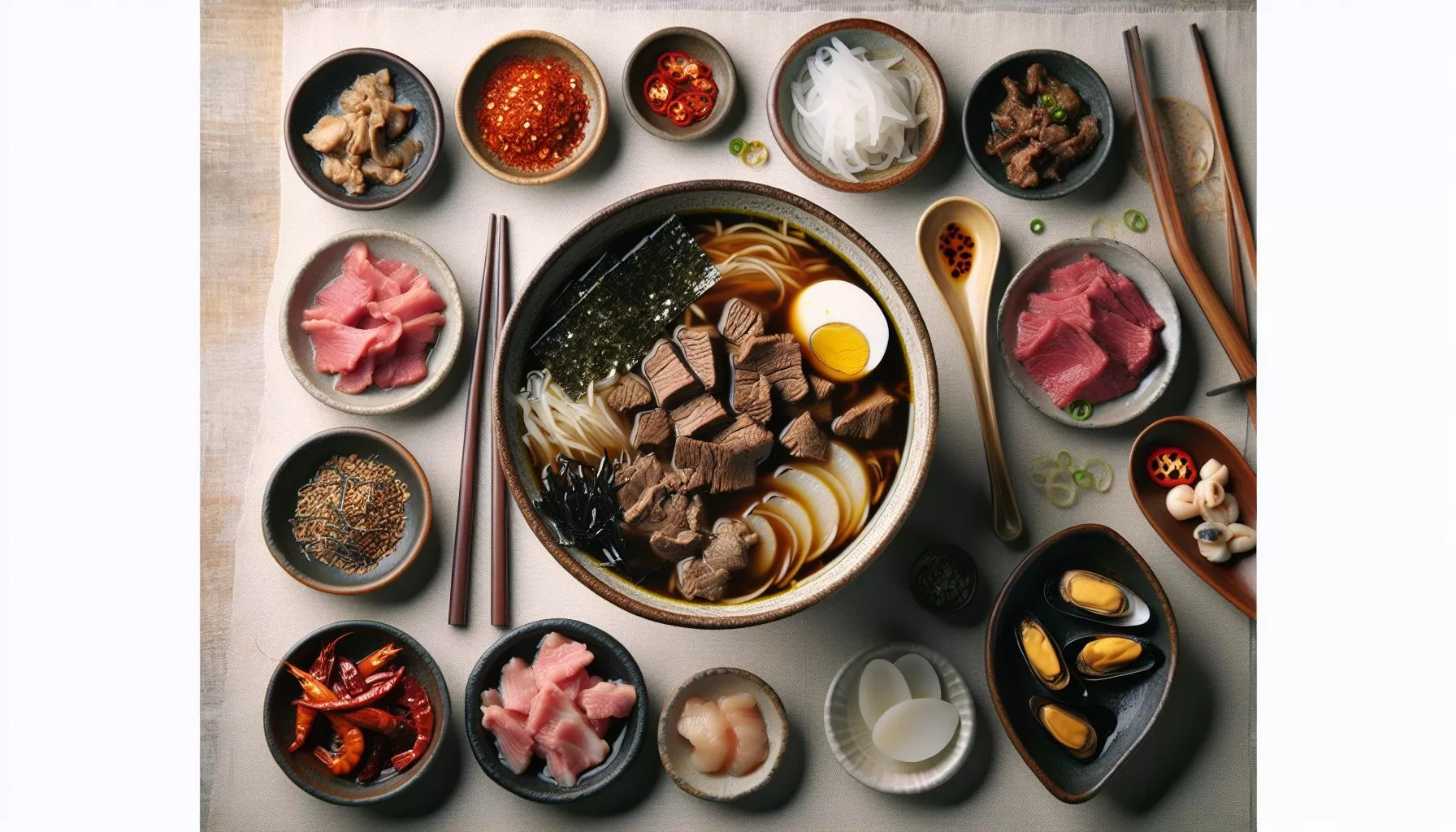
Ingredients for Homemade Beef and Radish Soup Muguk
Here’s your lineup for this heartwarming dish. A good soup gets most of its flavor from the veggies and the broth, and this radish soup is no different.
Firstly, radishes. You’ll need about 1 medium Korean radish or 4 cups diced radish. Why Korean radish, you may wonder? It’s known for its crispness and mild, sweet flavor. This makes it ideal for soups that simmer for a long time. Can’t find a Korean Radish? Don’t sweat it! A regular daikon radish will do just fine.
Next up: beef. A key player in this hearty broth. You’ll want about 400g of beef brisket, which is known for its rich flavor and melt-in-mouth texture. Trim off any excess fat to keep the soup light and healthy.
You’re also going to need something to give the broth its unique flavor: seasonings. For this recipe, you’ll require 2 tablespoons soy sauce, 2 teaspoon salt, 3 cloves of garlic (minced), and 1 teaspoon of sesame oil. The subtle, earthy-nutty flavor of sesame oil pairs well with the robust taste of beef and radish.
Lastly, for a pop of color and an added perk of health benefits, you’ll use green onions and seaweed. Three green onions, sliced, and 2 sheets of dried seaweed, soaked and sliced thin. Seaweed boasts a variety of nutrients, including iodine and tyrosine, which support thyroid health.
If you’re one for a little twist, try adding some red chili flakes. It’s not traditional, but it sure gives the soup an extra zing!
Clearly, quality ingredients make the perfect beef and radish soup. Now, let’s get you cooking your way to some homemade goodness.
Here’s the ingredient list at a glance:
| Ingredients | Quantity |
|---|---|
| Korean radish | 1 (or 4 cups diced) |
| Beef brisket | 400g |
| Soy sauce | 2 tablespoons |
| Salt | 2 teaspoons |
| Minced garlic | 3 cloves |
| Sesame oil | 1 teaspoon |
| Green onions | 3, sliced |
| Dried seaweed |
Step-by-Step Instructions
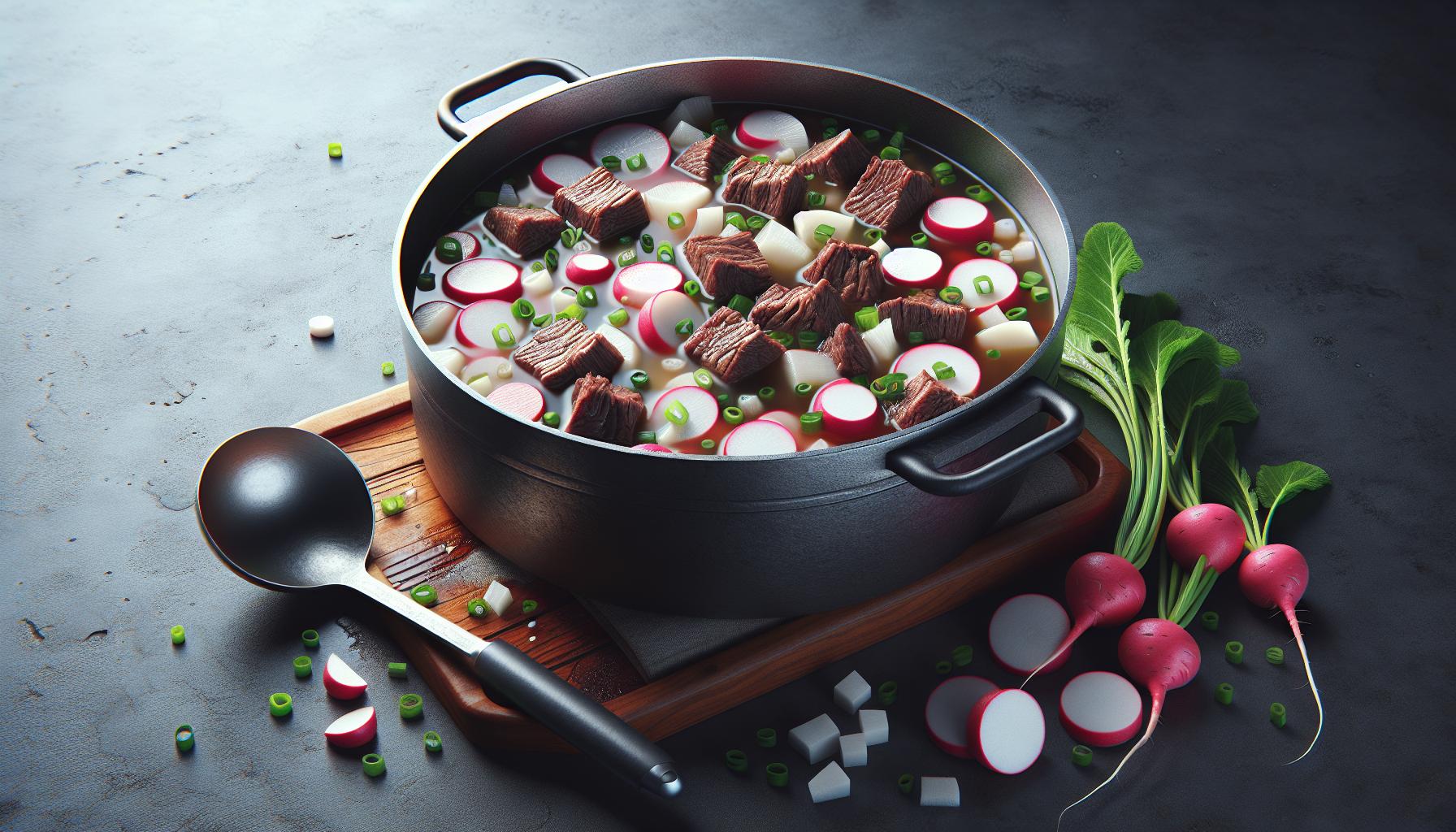
Got your ingredients? Great! Now it’s time to roll up your sleeves and get cooking. The click-clack of chopsticks on kitchen utensils is about to begin.
- First things first, preparation is key. Begin by chopping up your beautiful, crisp Korean radish into bite-sized pieces. The 1 lb of radish you’ve set aside should cut up quite nicely. The same goes for that succulent beef brisket. Dice it up into cube and slice the green onions.
- Now let’s bring this all to life. Grab your medium-size pot and turn the heat to medium-high. Place those carefully chopped brisket pieces into the pot. Sizzle your tastebuds into gourmet town.
- Stir in the chopped radishes. Watch as they start to absorb those rich, beefy flavors!
- What’s that? It’s time for the seasoning to join the party. Juice up the mix with your 1/3 cup of soy sauce, 1 minced garlic clove, and 1 tablespoon of sesame oil. And you know how it goes – a little bit of heat never hurt anybody, so why not sprinkle some red chili flakes too?
- We’re simmering on the right stove now. Pour in 5 cups of water and let that concoction of goodness come to a boil.
- Time to reduce the heat to low and let the soup simmer away for around 30 min.
- Those green onions and seaweed are feeling a little left out. So go on and toss them into the soup during the last 10 minutes. We can’t forget these nutrient-rich darlings.
And voilà! Your culinary skills are paying off. With every spoonful of this soup, a feel-good warmth spreads in your belly. Now, who said you can’t create Korean magic right in your kitchen?
Tips for Making the Perfect Muguk
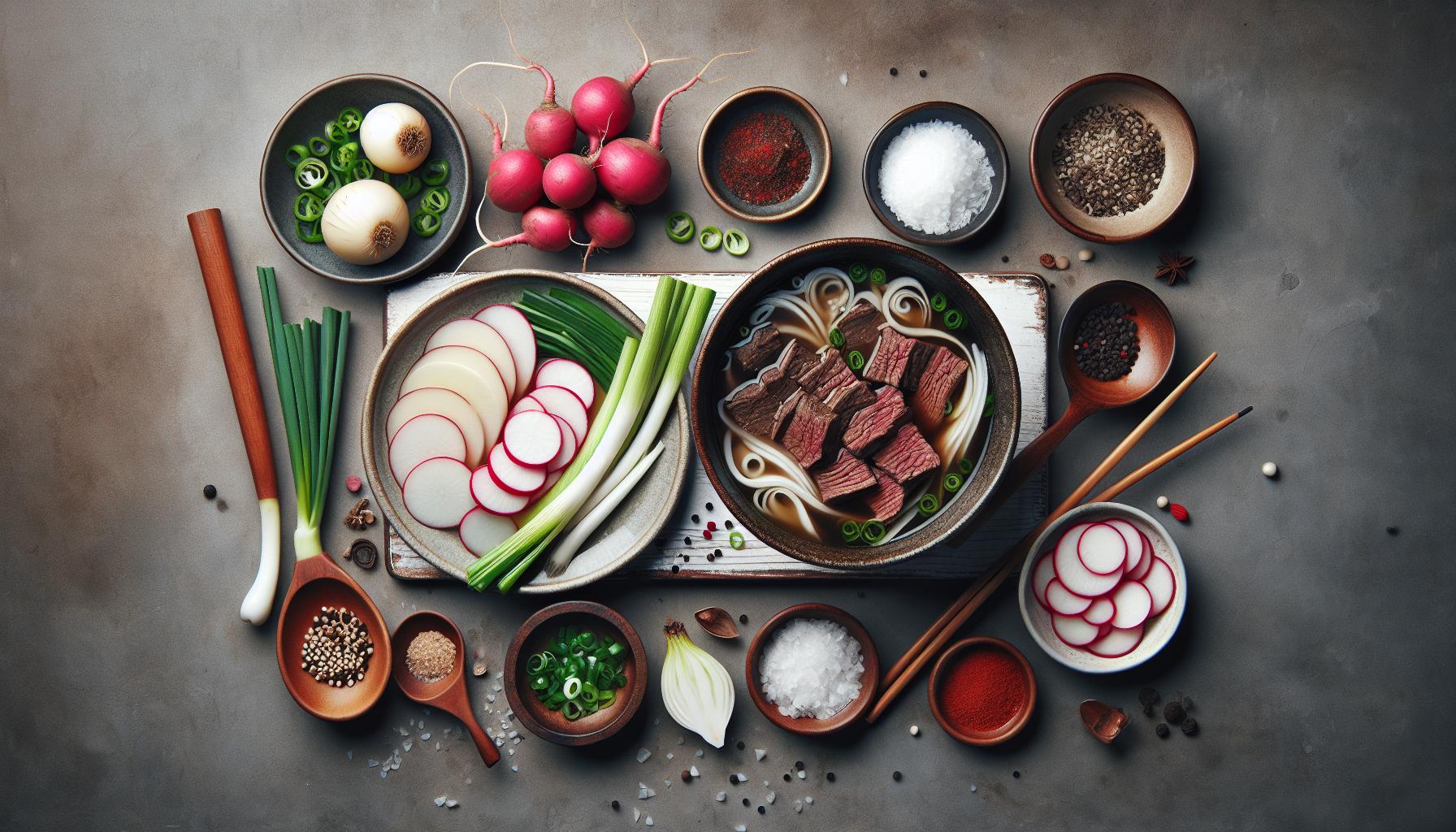
So, you’ve got your ingredients prepped and ready to go. Now, it’s time for some handy tips to elevate your homemade Beef and Radish Soup Muguk recipe.
Choose Quality Ingredients
Quality always matters. Whether it’s the Korean radish or the beef brisket, make sure you select fresh and top-notch ingredients. Your soup’s flavor is greatly influenced by the ingredients you’re cooking with. Don’t skimp on the quality!
Cooking Process Matters
Pay attention to the cooking process. For a flavorful broth, don’t rush the simmering. Good things, like a well-developed, rich broth, take time.
Don’t Overlook Seasonings
Ah, the magic of seasonings! Get creative but remember, balance is key. Soy sauce, garlic, sesame oil, red chili flakes – they all combine to infuse your soup with those classic Korean flavors. Consider adding a dash of fish sauce for that umami punch some soup lovers crave.
Boost the Nutritional Value
Thinking about nutrition? This soup already packs a punch. However, to amp it up a notch, layer on the greens. Adding seaweed and green onions not only enhances flavor but also lifts the nutritional profile of your soup.
Let’s dish out some alternative ingredient tips.
Alternative Ingredient Tips
Feeling adventurous? There’s always room for a dash of the unique. Here are a few unconventional add-ins you can consider:
- Substitute beef brisket with shiitake mushrooms for a vegetarian twist.
- Add a touch of sweetness with a spoonful of honey. It’s an unexpected, delightful twist!
Remember, experimenting is all part of the magic. Stay true to the core of your Beef and Radish Soup, Muguk, but don’t be afraid to make it your own flavor adventure! With these tips, your soup making just got a level-up.
Serving and Storing Muguk
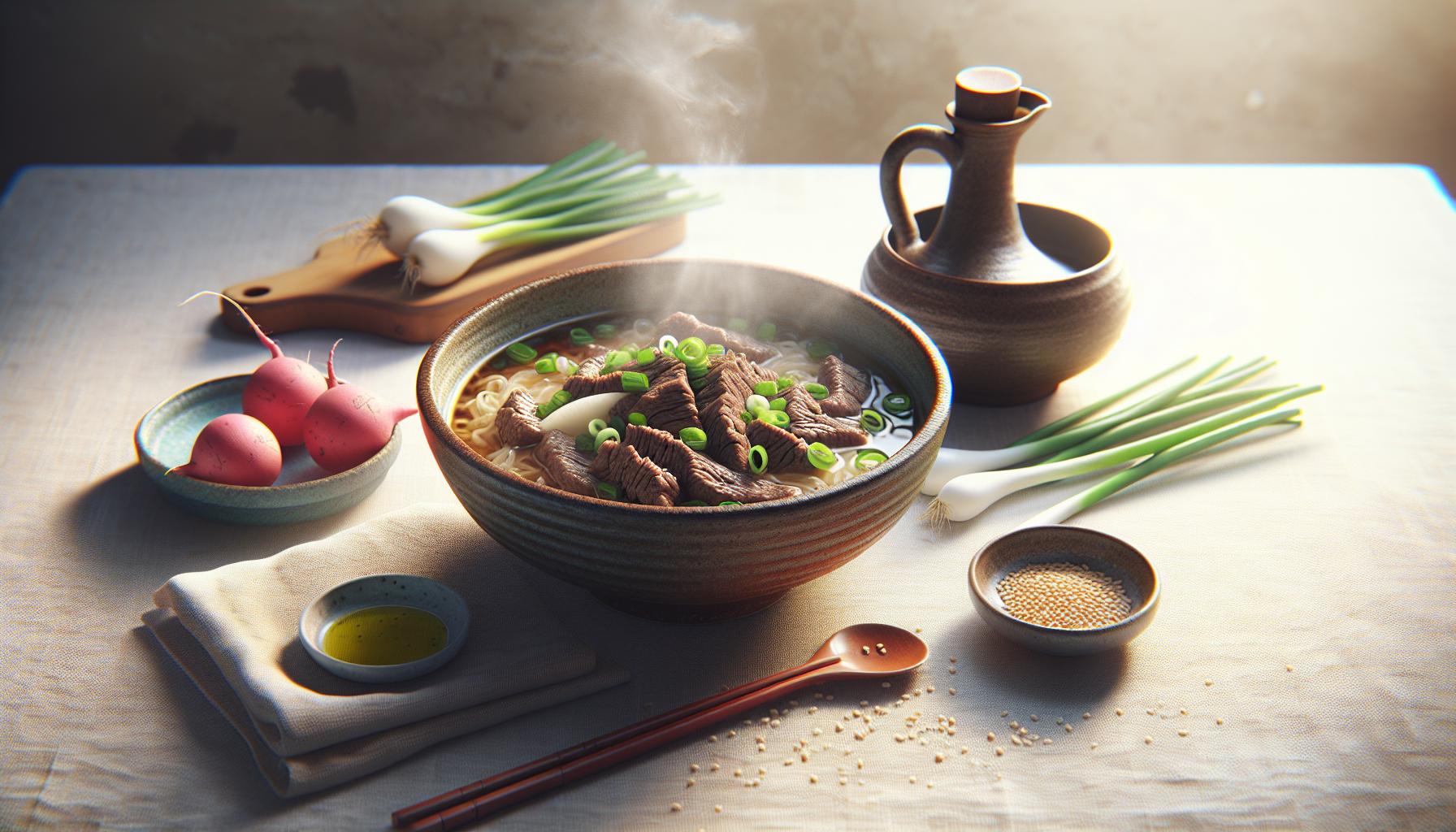
Serving muguk in the right way can elevate your dining experience. Ladle it into warm bowls and garnish with additional green onions or chili flakes if you favor a spicier profile. If the idea of bite-sized delights appeals to you, consider sprinkling sesame seeds or a splash of sesame oil. Ensure the soup is served hot; it’s what brings out the intense, complex flavors of this Korean dish.
Turning to storage, muguk is as versatile as they come. Feel free to refrigerate leftovers, as this prolongs the soup’s life for up to four days. Just decant it into an airtight container and chill. Need it to last even longer? That’s where freezing comes in. Seal it well to prevent freezer burns and your muguk can comfortably stretch up to three months.
Thawing is simple – take your soup out of the freezer, leave it to thaw in the fridge overnight, reheat, and serve. Don’t forget to give it a good stir as the radishes might settle at the bottom.
However, be mindful of reheating procedures. Use a pot on low heat to gradually warm the soup. Avoiding a rapid boil keeps the delicate flavors intact.
There aren’t fixed rules to enjoying muguk. You, being the cook, have the freedom to tweak its serving and storing methods to suit your preference. So, go ahead and explore the myriad serving options. The possibilities are endless.
Spice Up Your Muguk Experience
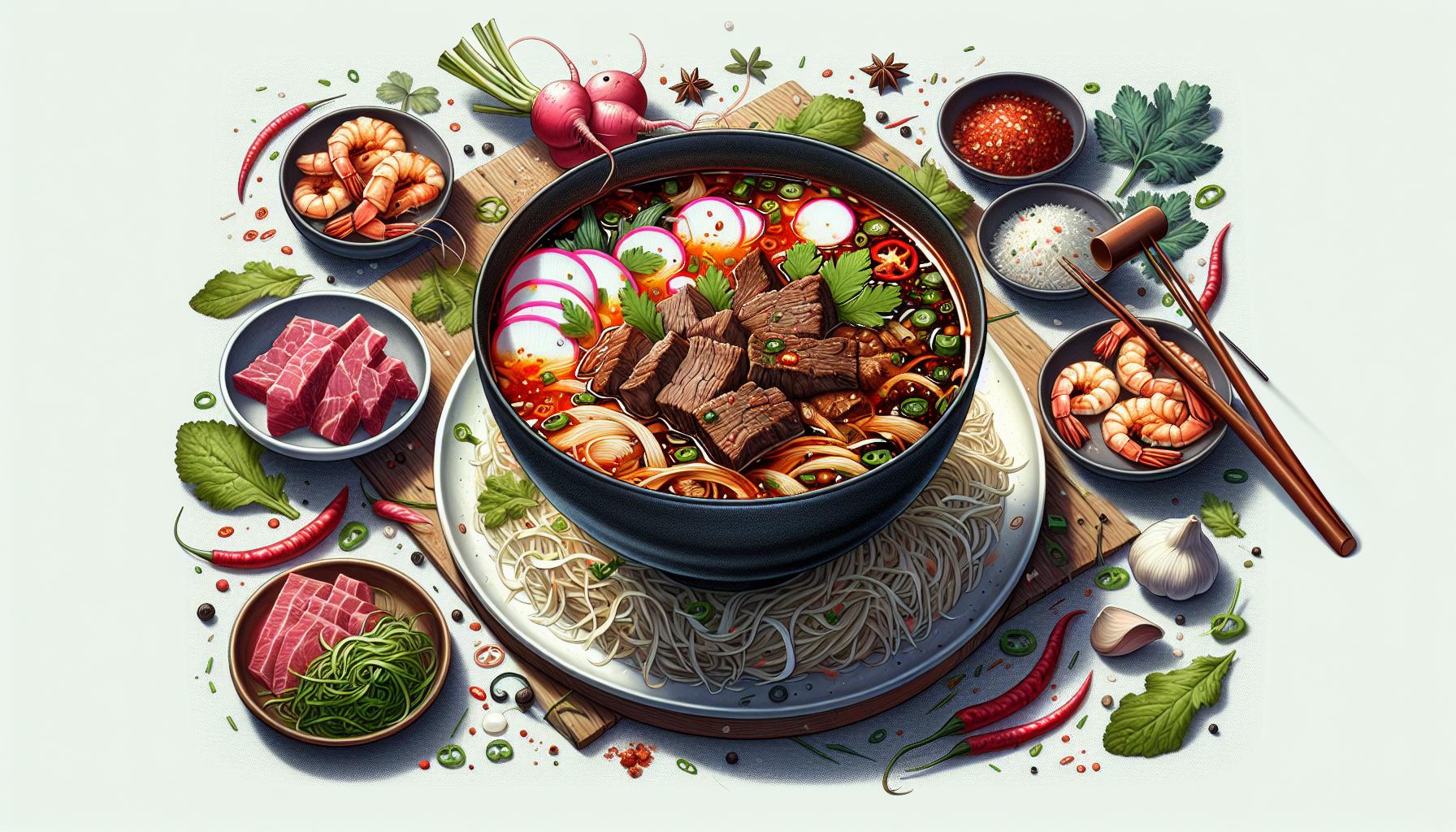
Perhaps you crave something a little adventurous. Maybe the traditional Homemade Beef and Radish Soup Muguk tickles your palate but you yearn for a bolder flavor punch. You’re in luck! We’ve got fresh tips and alternatives to jazz up this comforting Korean cuisine.
It’s time to Unveil the Spice Ensemble. Amp up the heat quotient of your typical Muguk with add-ins like Gochugaru (Korean chili powder). Be guided, it’s a potent heat source that should be used judiciously. For a milder option, consider Chili flakes. They not only add a dash of heat but their vibrant color boosts the aesthetic appeal as well.
Many a time, underestimated and overlooked, garnishing ingredients have a major role in Transforming Your Soup. An array of herbs and spices can be used to top off your Muguk. Sprinkle Shredded Nori or slivers of the fine Daikon radish to elevate the flavor profile and texture of your hot bowl of soup.
Dwell into the realm of Premium Proteins. Who said Muguk has to be stuck with beef? Switch it up with fatty slices of Pork belly or tender chunks of Chicken breast. Seafood lovers can toss in bite-sized pieces of Shrimp or succulent Mussels.
Interested in the nutritional aspect of your meal? A bowl of Traditional Homemade Beef and Radish Soup Muguk consists (approximately) of:
| Nutrient | Value |
|---|---|
| Calories | 276 Kcal |
| Carbs | 9 g |
| Protein | 24 g |
| Fat | 16 g |
As always, do remember; these spice swaps and protein switch-ups are entirely up to your personal preferences and dietary restrictions. Strive to create a tailored Bowl of Muguk that comforts your soul and capers your taste buds. Take pride in making your version of this comforting Korean classic.
Conclusion
You’ve now got the know-how to whip up your own version of Homemade Beef and Radish Soup Muguk. Don’t be afraid to experiment with the spices, garnishes, and proteins you use. Whether you’re a fan of heat from Gochugaru, crave the texture of Shredded Nori, or want to switch up the protein with Pork belly or Chicken breast, it’s all up to you. Remember, the beauty of this dish lies in its adaptability. Nutritional adjustments are also a breeze, making this Korean classic fit seamlessly into your dietary plan. So go ahead, get creative, and let your taste buds rejoice in the hearty, soulful delight that is your personalized Muguk.





